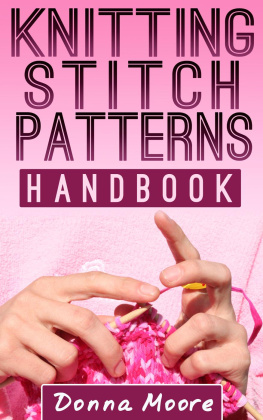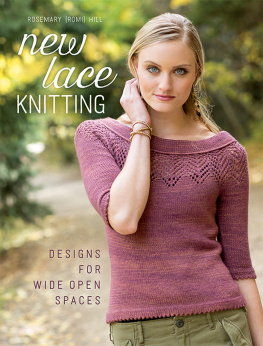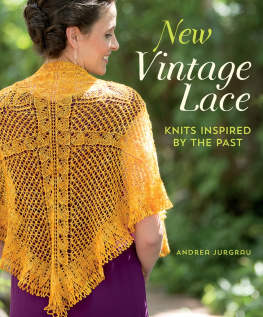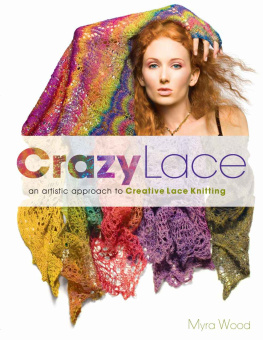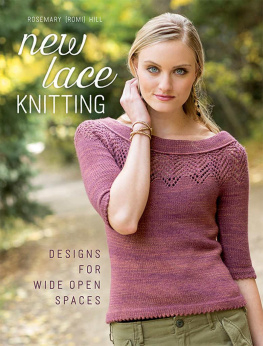Abbreviations
B bead
beg beginning
CCO cable cast-on
CO cast on
dec decrease(d)
inc increase(d)
k knit
k2tog knit 2 sts together
kfbf knit into front, back, then front of the same stitch
m marker
m1 lift the strand between two needles and knit through the back loop
p purl
p2tog purl 2 sts together
p2tog tbl insert right needle in back of 2nd st on left needle, then in back of 1st st; loop yarn around right needle as if to purl and pull through a loop; slip sts off left needle
patt pattern
pm place marker
psso pass slipped stitch over
RBO Russian bind-off
rep repeat
rnd(s) round(s)
RS right side
s2kpo slip 2 stitches knitwise, knit 1 stitch, pass slipped stitches over
SJ single join
sk2po slip 1 stitch knitwise, k2tog, pass slipped stitch over
sl slip
sl wyib slip stitch purlwise with yarn in back
sl wyif slip stitch purlwise with yarn in front, then take the yarn between the stitches to the back
sm slip marker
ssk slip one stitch knitwise, slip another stitch knitwise, insert left needle into the front of both stitches and knit tog
st(s) stitch(es)
St st stockinette stitch
tbl through back loop
tog together
WS wrong side
yo yarn over
Acknowledgments
C reating a knitting book is a team project. Id like to start by thanking my editor, Candi Derr, and the team at Stackpole Books for their trust and confidence in me and for all the hard work theyve put into making this book beautiful.
It takes a lot of knitting to produce all the beautiful samples, and Id like to thank my wonderful team of sample knitters for their hard work and hours of knitting. Thank you to Liz Agnew, Anita Cross, Frances Jago, Jen Snow, Nicky Sutton, and Judy Wilmot. Id also like to thank all the yarn companies who provided yarn support for this book. Im so fortunate to be able to work with some beautiful yarns.
Thank you to my husband, Simon, and daughters, Vanessa and Emily, for all their support during my knitting career and for putting up with me while I wrote this book.
My mum taught me to knit when I was a little girl growing up in Norway and helped me to develop my knitting skills during my teenage years. Im so grateful that she introduced me to knitting at such a young age.
I appreciate support from so many knitters around the world. The feedback I get from you helps me decide what to design next. I love seeing what you knit from my patterns, so do share your projects from this book with me. Reach out to me on social media or join my Facebook group, Love of Lace Knitting.
Making Lace Knitting Easier
I f youre new to lace knitting, this book will walk you through the stitches and skills you need to know and give you 20 patterns to test your skills on. You probably already know many, if not all, of the stitches used in this book; its the combination of them that makes lace. If youve already dipped your toe into the lace-knitting pond, then its probably the gorgeous shawls and sweaters that inspired you to pick up this book, and you can skip right ahead to those, referring to the techniques section only as needed.
Patterns are arranged into three levels of difficulty: Level 1 is the easiest, 3 is the most difficult. It is hard to divide patterns into degrees of difficulty because its all relative. How challenging a technique is depends on your level of experience. If you know how to knit, purl, cast on, and bind off, and can follow a pattern (see How to Read a Pattern on this page if youre unsure), then you will be able to knit the patterns in this book.
Since lace knitting comes with some extra challenges, Ive outlined some tricks of the lace-knitting trade in this chapter. Youll find helpful information on how to prevent and fix mistakes, how to choose yarn, and how to plan ahead to ensure success, among other useful bits of knowledge, such as understanding basic shawl shaping.
Remember, knitting is supposed to be fun! But you will develop your skills only if you challenge yourself to try more difficult patterns. If you knit plain garter stitch scarves every time, you will never improve or learn new stitches and techniques. Look at each pattern as a learning opportunity, and dont be afraid of making mistakes. We learn more from those errors than we do from getting everything right the first time.
Knitting a pattern you think is more difficult than what youve knitted before really boosts your confidence and gives you a huge sense of pride and satisfaction when you finish it, so dont be afraid to try any of the patterns in this book. If youre unsure of a technique or stitch pattern, practice on a swatch first. Use lifelines and stitch markers as described in this chapter to keep your place in the pattern and to help you correct mistakes. And, remember, this is only knitting; its supposed to be funits not a matter of life or death. If you make a mistake, rip it out and start again. I know its frustrating, but its better than giving up. Take the instructions one step at a time. If youre not sure you understand what youre being asked to do, just try following the instructions. Practice on a swatch and actually do what the pattern says, step by step. Many things make more sense when youre actually knitting than just reading about it.
If you dont feel ready to dive into the patterns yet, knit some practice swatches. Look through the book, find a stitch pattern you like, and knit a practice square or even a mini shawl. Knit a few swatches from different stitch patterns.
During my workshops, Ive noticed that most knitters are actually better than they think they are. Usually its a question of confidence and being willing to give it a go. We can all learn new things, and we can all improve. Whether youve been knitting for a few months or 70 years, you can knit the patterns in this book. I think your attitude is more important than your experience. If youre willing to give new techniques a go and arent worried about making mistakes, you will learn much more quickly and enjoy your knitting much more than if youre nervous of trying new things.
How to Read a Pattern
Every designer has a slightly different way of writing patterns, and every publisher and magazine have a slightly different pattern style. This can make reading patterns somewhat confusing. These days, you can easily purchase patterns, books, and magazines online from anywhere in the world, and different countries have different styles of writing patterns. In some countries, the norm is to include a lot of information and step-by-step instructions; in other countries, patterns are very brief.
When you knit a pattern from new designers, it can take some adjustment to follow their patterns as you have to learn their individual language and how they structure their patterns.
Here, Im going to explain how to find your way through one of my patterns.
Yarn Requirements, Measurements, and Gauge
At the beginning of a pattern, you will find yarn requirements, details about which needle size to use, other notions needed, measurements, and details about gauge. Remember, you will only achieve the measurements stated if you knit to the correct gauge and block the garment correctly (I have a free online blocking tutorial; see my website for details).
If youre knitting a shawl or a scarf where fit is not as important, you can worry less about getting the exact gauge, although a difference in gauge wont just affect finished size, it will affect how much yarn you need, too. Please bear this in mind if your gauge varies from the pattern.
Difficulty Level
Ive added difficulty levels to the patterns in this book and listed the stitches and techniques used in each pattern to give you a quick idea on what skills you will need for every piece. Its always difficult to assign a difficulty levelI dont want to discourage you from trying any pattern in this book! Basically, though, Level 1 patterns have simple shapes and easy lace patterns, while higher levels have more complicated shapes and more difficult lace patterns.


